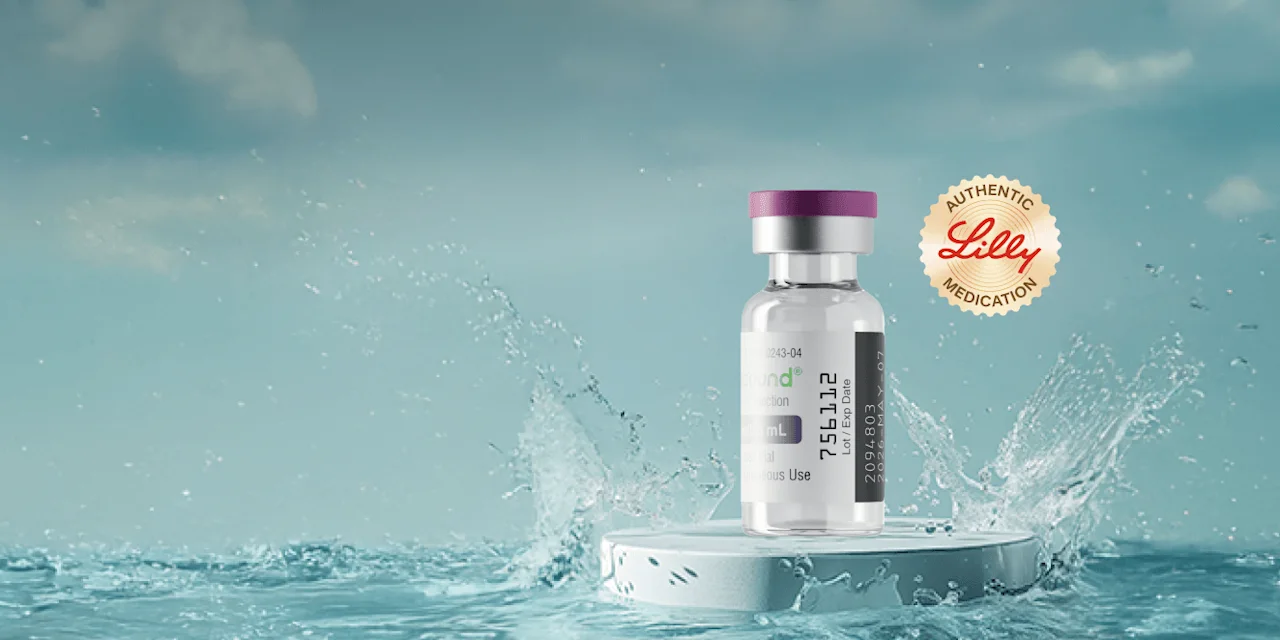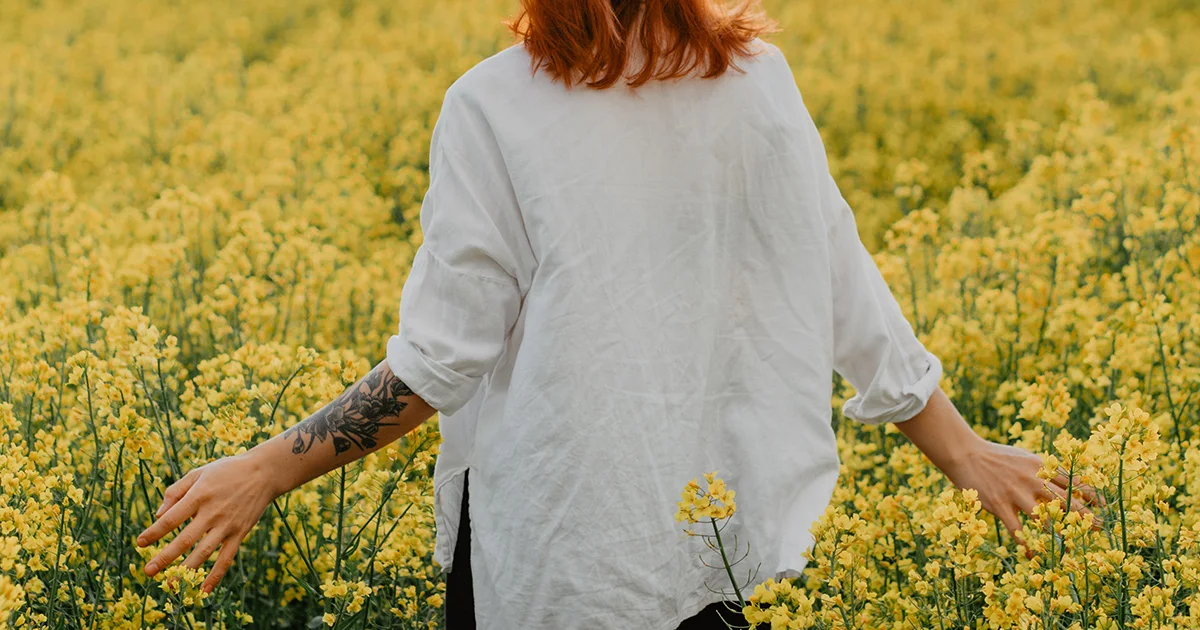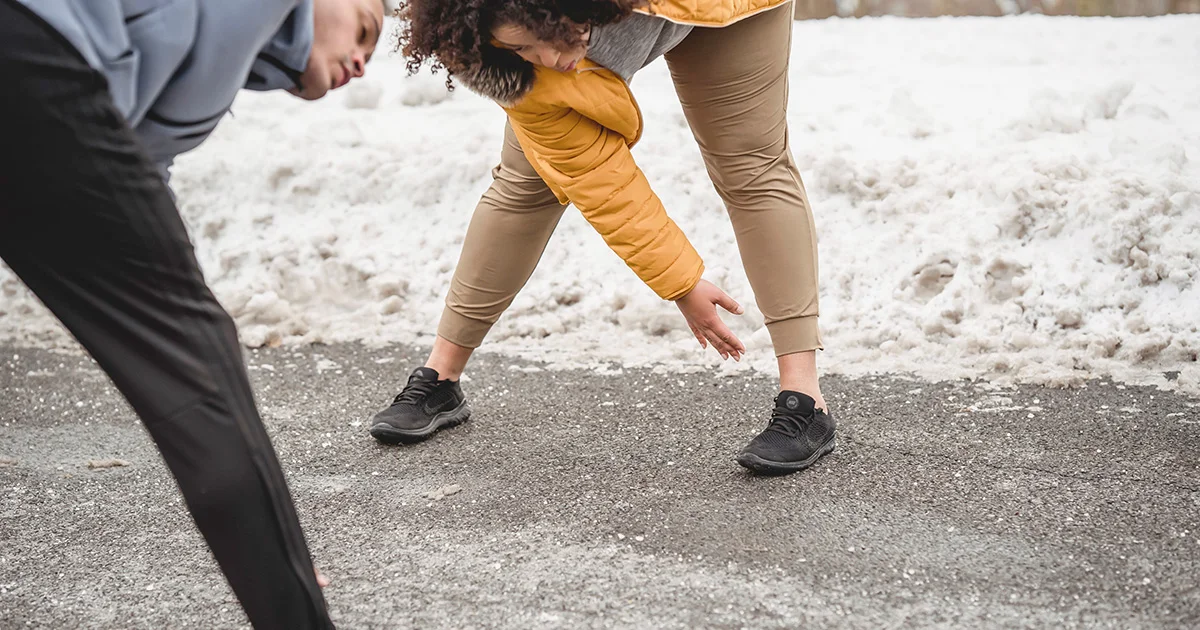Key takeaways
The ice hack, or Alpine Ice Diet, is supposed to use cold temperatures to supercharge fat-burning, but the research behind this hack proves it’s not an efficient way to lose weight.
Here's what we'll cover
Here's what we'll cover
Key takeaways
The ice hack, or Alpine Ice Diet, is supposed to use cold temperatures to supercharge fat-burning, but the research behind this hack proves it’s not an efficient way to lose weight.
If you’re on TikTok, chances are you've come across videos touting the supposed incredible weight loss results of the Alpine Ice Hack diet.
These videos claim that one simple (ice) hack can lead to tens of pounds lost. But, does the ice hack for weight loss really work? Spoiler alert: probably not. Let’s take a look at the research.
What is the ice hack (aka Alpine Ice Diet)?
By its simplest definition, the ice hack, or Alpine Ice Diet, is about using cold temperatures to supercharge fat burning. It’s based on thermogenesis, which is your body’s process of keeping your body around a baseline temperature. When you’re exposed to cold, your body generates heat to keep your core temperature within normal limits. Specifically, it uses brown adipose tissue, or brown fat, to speed up your metabolism and burn fat.
You may come across one of two variations of the ice hack on TikTok. The first variation of the Alpine Ice Diet is more of a bait and switch. In this version, the TikTok videos show a person talking about their amazing ice hack results, as they pour some mysterious white powder over a glass filled to the brim with ice cubes before directing you to a link in their bio. This link almost invariably takes you to a page promoting a weight loss supplement, usually Alpilean or Puravive. Both of these claim to promote weight loss by increasing your core body temperature and subsequently boosting your metabolic rate, though these claims have never been evaluated by the FDA, and when a weight loss supplement sounds too good to be true, it usually is.
The second variation of the ice hack you may have stumbled upon is more of a DIY operation. It works like this:
Wrap a bag of ice cubes or an ice pack in a towel.
Apply the ice to whatever part of your body you’d like to lose fat, be it your abdomen or thighs. Be sure to keep the ice wrapped in the towel; you don't want the ice to directly touch your skin.
Keep the ice on for about half an hour.
Repeat the process every day or so, while giving yourself some time off here and there so your body can recover.
And while this version might seem a little less sketchy than the mysterious white powder version, there’s no real evidence that it has any significant effect in terms of targeted weight loss.
Does the ice hack help you lose weight?
In a word (or two words): not really. Yes, there is some truth to the science behind the Alpine Ice Diet — essentially, your body does experience a small boost in metabolism and fat burning capacity when you have to warm yourself up after being cold. In reality, however, exposing yourself to cold temperatures is not an efficient way to reliably lose weight, nor is it necessarily a safe method to lose weight (more on this in a bit).
TikTok influencers claim the Alpine Ice Hack helped them lose dozens of pounds in just a few weeks. Many claim the pounds just “melt away,” without having to change up their diet or exercise more. In reality, the amount of weight loss from 30 minutes of cold exposure amounts to a handful of extra calories (and it takes about 3,500 calories to burn one pound of body fat).
Like most weight loss fads, the ice hack sounds too good to be true — because it is. Successful weight loss and long-term weight management require permanent lifestyle changes, like consuming fewer calories than your body burns (or, put less formulaically, eating better and getting regular exercise).
The effects of cold on the body
Exposure to cold temperatures does have a metabolism-boosting effect on the body, but the resulting weight loss is minimal at best. However, scientists have documented various health benefits of intermittent cold exposure, which is, funnily enough, shortened to ICE.
Taking a cold shower can give your energy levels a quick boost and aid in muscle recovery. Or, you can go for a cold swim to enjoy less tension, fatigue, and depression. There is even some evidence that regularly showering in cold water can stave off certain types of tumors, according to studies done in rats.
Is the ice hack diet safe?
There are some real risks to the Alpine Ice Hack, including frostbite. Even if you take care to avoid the ice coming into direct contact with your skin for extended periods of time, you may experience other uncomfortable side effects, such as numbness and shivering.
And if you have certain underlying health conditions, including heart problems or circulation issues, the ice hack could be even riskier. Whenever trying a new weight loss supplement or technique, it’s a good idea to check in with your doctor to ensure it will be safe for you — especially if you have any underlying medical conditions.
As for the supplements using the ice hack in their advertising, such as Puravive or Alpilean, it’s important to remember that dietary supplements are not regulated by the U.S. Food and Drug Administration (FDA) the way prescription and over-the-counter medications are. That means they can get away with making certain claims in their marketing, regardless of whether they hold up. It also means that you can’t be sure that what’s inside matches what the label says.
Moreover, some of the ingredients the manufacturers claim help with calorie burning, such as Alpilean’s bitter orange, have not been shown to promote meaningful weight loss in clinical studies. Moreover, bitter orange has been linked to worrisome side effects like increased blood pressure and heart rate. And, there is limited scientific evidence that the other ingredients, such as ginger, have any effect on weight loss at all.
Ice hack alternatives to lose weight
Now that we know that the ice hack is, well, hacky, let’s review some alternatives to lose weight that actually work.
Eat less
The formula for successful, sustainable weight loss is pretty straightforward: eat fewer calories than you burn. It’s also a good idea to lose weight gradually using a sustainable method — about 0.5–2 pounds per week — as that makes it easier to stick to your new habits than any drastic changes. Drastic methods that are unsustainable, like crash diets that promise to help you drop 10 pounds in a week, usually inevitably result in a regain of all that weight and sometimes more.
Reducing your caloric intake by 500–750 calories per day can lead to a total weight loss of 3%–5% in just a few months. It can feel tough, to say the least, to suddenly cut out that many calories. But adopting some new eating habits can make it feel more doable.
For example, try mindful eating. Eat only when you feel hungry. When you do eat, chew slowly and savor your food, paying attention to how it tastes and how you feel. You may find you feel full sooner than you would otherwise expect. (When that happens, stop eating.) Studies have found that people who eat more slowly report more enjoyment from their food and are less likely to snack in the hours afterward.
Get moving
Like PB and J, diet and exercise go together in any weight loss journey. While any kind of physical activity can help you feel good and lose weight, the most effective type of exercise for weight loss is a two-for-one combo.
Pairing aerobic exercise with strength training, whether together or on separate days during the week, helps you burn fat (that’s the cardio) while building muscle (and that’s the strength training). Together, these effects can increase your metabolism, which can slow significantly when you reduce your caloric intake. Adding sustainable and enjoyable exercise to your routine, in combination with a healthy diet, can lead to weight loss.
Incorporating more movement into your day, beyond exercise, can also help you burn more calories. Take movement breaks during the day, where you get up and stretch, or walk in place for a minute. Opt to stand more rather than sit, or choose the stairs over an elevator.
Adopt a balanced diet
While eating less in general helps with weight loss, eating more nutritious foods — and foods that promote weight loss — can help too. For example, people who eat protein-rich diets tend to lose more weight and more body fat. That may be because protein promotes feelings of fullness, leading you to eat less overall.
Plus, eating more protein can supercharge your exercise efforts, since protein helps you build more muscle mass. Sources of protein include:
Fish
Poultry
Red meat
Dairy
Eggs
Soy
Nuts
Legumes
Seeds
Beans
Whole grains
Like protein, fiber also promotes feelings of fullness. Studies have shown that eating more fiber can lead to more weight and fat loss, especially belly fat. You can find fiber in most fruits and vegetables, as well as legumes, oats, beans, nuts and seeds.
Drink more water
Here’s one thing the ice hack diet gets right: drinking water can help with weight loss. Studies of animals suggest that drinking water may boost metabolism. As for humans, drinking more water has been associated with more weight and fat loss, according to a year-long study of overweight women
Studies show that drinking water before a meal leads people to eat less during the meal, and still feel just as full. In lieu of the ice hack, why not try the water hack instead?
Sleep more
Part of the allure of the Alpine Ice Diet is how little effort is involved. Well, we’ll do you one better. What requires the least effort of all? Sleep.
If you’re like one-third of Americans, you’re not getting enough sleep on a regular basis. That lack of sleep could be impeding your weight loss efforts. Study after study has found that people who regularly get fewer than 7 hours of sleep tend to have higher body weights and obesity.
Chronic sleep deprivation increases levels of ghrelin, the so-called “hunger hormone,” while decreasing lepton, the “fullness hormone.” Other studies suggest poor sleep also messes with your appetite and your metabolism, leading to weight gain and more stubborn body fat.
So, swap the Alpine Diet for the Sleep Diet, and prescribe yourself 7–8 hours of restful sleep per night.
Consider weight loss medications
If you’ve been struggling to lose weight with lifestyle changes alone, consider asking your healthcare provider about medications for weight loss. GLP-1 medications, including Wegovy and Zepbound, can help people lose between 15%–21% of their body weight within a year and a half, when combined with diet and exercise.
You can get a prescription for these medications from your healthcare provider, a specialist in obesity medicine, or online through the Ro Body program, a comprehensive program that includes:
Prescriptions for GLP-1 medication, when appropriate
Metabolic testing
A personalized treatment plan
1:1 health coaching
A step-by-step curriculum
Ongoing support from your provider
Insurance concierge services to help you get insurance coverage for your medication
Learn more about how the Ro Body program works.
There are no quick fixes for healthy weight management. But adopting healthier habits, like eating better and moving more, can lead to sustainable weight loss. Try some of the tips above and discover what works for you.
Wegovy Important Safety Information: Read more about serious warnings and safety info.
Zepbound Important Safety Information: Read more about serious warnings and safety info.
DISCLAIMER
If you have any medical questions or concerns, please talk to your healthcare provider. The articles on Health Guide are underpinned by peer-reviewed research and information drawn from medical societies and governmental agencies. However, they are not a substitute for professional medical advice, diagnosis, or treatment.
Acosta, F. M., Martinez-Tellez, B., Sanchez-Delgado, G., et al. (2018). Physiological responses to acute cold exposure in young lean men. PloS One, 13(5), e0196543. doi:10.1371/journal.pone.0196543. Retrieved from https://www.ncbi.nlm.nih.gov/pmc/articles/PMC5937792/
Akbar, A. & Shreenath, A. P. (2023). High Fiber Diet. StatPearls. Retrieved Dec. 8, 2023 from https://www.ncbi.nlm.nih.gov/books/NBK559033/
Aristizabal, J. C., Freidenreich, D. J., Volk, B. M., et al. (2015). Effect of resistance training on resting metabolic rate and its estimation by a dual-energy X-ray absorptiometry metabolic map. European Journal of Clinical Nutrition, 69(7), 831–836. doi:10.1038/ejcn.2014.216. Retrieved from https://pubmed.ncbi.nlm.nih.gov/25293431/
Cooper, C. B., Neufeld, E. V., Dolezal, B. A., et al. (2018). Sleep deprivation and obesity in adults: a brief narrative review. BMJ Open Sport & Exercise Medicine, 4(1), e000392. doi:10.1136/bmjsem-2018-000392. Retrieved from https://www.ncbi.nlm.nih.gov/pmc/articles/PMC6196958/
Górska-Warsewicz, H., Laskowski, W., Kulykovets, O., et al. (2018). Food Products as Sources of Protein and Amino Acids-The Case of Poland. Nutrients, 10(12), 1977. doi:10.3390/nu10121977. Retrieved from https://www.ncbi.nlm.nih.gov/pmc/articles/PMC6315330/
Hawton, K., Ferriday, D., Rogers, P., et al. (2018). Slow Down: Behavioural and Physiological Effects of Reducing Eating Rate. Nutrients, 11(1), 50. doi:10.3390/nu11010050. Retrieved from https://www.ncbi.nlm.nih.gov/pmc/articles/PMC6357517/
Higgins, T. R., Greene, D. A., & Baker, M. K. (2017). Effects of Cold Water Immersion and Contrast Water Therapy for Recovery From Team Sport: A Systematic Review and Meta-analysis. Journal of Strength and Conditioning Research, 31(5), 1443–1460. doi:10.1519/JSC.0000000000001559. Retrieved from https://pubmed.ncbi.nlm.nih.gov/27398915/
Ivanova, Y. M. & Blondin, D. P. (2021). Examining the benefits of cold exposure as a therapeutic strategy for obesity and type 2 diabetes. Journal of Applied Physiology (Bethesda, Md.: 1985), 130(5), 1448–1459. doi:10.1152/japplphysiol.00934.2020. Retrieved from https://pubmed.ncbi.nlm.nih.gov/33764169/
Jastreboff, A. M., Aronne, L. J., Ahmad, N. N., et al. (2022). Tirzepatide Once Weekly for the Treatment of Obesity. The New England Journal of Medicine, 387(3), 205–216. doi:10.1056/NEJMoa2206038. Retrieved from https://www.nejm.org/doi/10.1056/NEJMoa2206038
Jeong, J. N. (2018). Effect of Pre-meal Water Consumption on Energy Intake and Satiety in Non-obese Young Adults. Clinical Nutrition Research, 7(4), 291–296. doi:10.7762/cnr.2018.7.4.291. Retrieved from https://www.ncbi.nlm.nih.gov/pmc/articles/PMC6209729/
Killick, R., Banks, S., & Liu, P. Y. (2012). Implications of sleep restriction and recovery on metabolic outcomes. The Journal of Clinical Endocrinology and Metabolism, 97(11), 3876–3890. doi:10.1210/jc.2012-1845. Retrieved from https://www.ncbi.nlm.nih.gov/pmc/articles/PMC5393445/
Koliaki, C., Spinos, T., Spinou, Μ., et al. (2018). Defining the Optimal Dietary Approach for Safe, Effective and Sustainable Weight Loss in Overweight and Obese Adults. Healthcare (Basel, Switzerland), 6(3), 73. doi:10.3390/healthcare6030073. Retrieved from https://www.ncbi.nlm.nih.gov/pmc/articles/PMC6163457/
Koncz, D., Tóth, B., Bahar, M. A., et al. (2022). The Safety and Efficacy of Citrus aurantium (Bitter Orange) Extracts and p-Synephrine: A Systematic Review and Meta-Analysis. Nutrients, 14(19), 4019. doi:10.3390/nu14194019. Retrieved from https://pubmed.ncbi.nlm.nih.gov/36235672/
Leidy, H. J., Clifton, P. M., Astrup, A., et al. (2015). The role of protein in weight loss and maintenance. The American Journal of Clinical Nutrition, 101(6), 1320S–1329S. doi:10.3945/ajcn.114.084038. Retrieved from https://www.sciencedirect.com/science/article/pii/S0002916523274274
Maliszewska, K. & Kretowski, A. (2021). Brown Adipose Tissue and Its Role in Insulin and Glucose Homeostasis. International Journal of Molecular Sciences, 22(4), 1530. doi:10.3390/ijms22041530. Retrieved from https://www.ncbi.nlm.nih.gov/pmc/articles/PMC7913527/
Mansour, M. S., Ni, Y. M., Roberts, A. L., et al. (2012). Ginger consumption enhances the thermic effect of food and promotes feelings of satiety without affecting metabolic and hormonal parameters in overweight men: a pilot study. Metabolism: Clinical and Experimental, 61(10), 1347–1352. doi:10.1016/j.metabol.2012.03.016. Retrieved from https://www.ncbi.nlm.nih.gov/pmc/articles/PMC3408800/
McKie, G. L., Shamshoum, H., Hunt, K. L., et al. (2022). Intermittent cold exposure improves glucose homeostasis despite exacerbating diet-induced obesity in mice housed at thermoneutrality. The Journal of Physiology, 600(4), 829–845. doi:10.1113/JP281774. Retrieved from https://pubmed.ncbi.nlm.nih.gov/34192813/
Presby, D. M., Jackman, M. R., Rudolph, M. C., et al. (2019). Compensation for cold-induced thermogenesis during weight loss maintenance and regain. American Journal of Physiology. Endocrinology and Metabolism, 316(5), E977–E986. doi:10.1152/ajpendo.00543.2018. Retrieved from https://pubmed.ncbi.nlm.nih.gov/30912962/
Rubino, D. M., Greenway, F. L., Khalid, U., et al. (2022). Effect of Weekly Subcutaneous Semaglutide vs Daily Liraglutide on Body Weight in Adults With Overweight or Obesity Without Diabetes: The STEP 8 Randomized Clinical Trial. JAMA, 327(2), 138–150. doi:10.1001/jama.2021.23619. Retrieved from https://pubmed.ncbi.nlm.nih.gov/35015037/
Saeidifard, F., Medina-Inojosa, J. R., Supervia, M., et al. (2018). Differences of energy expenditure while sitting versus standing: A systematic review and meta-analysis. European Journal of Preventive Cardiology, 25(5), 522–538. doi:10.1177/2047487317752186. Retrieved from https://academic.oup.com/eurjpc/article/25/5/522/5926154
Schwartz, J. (2016). Nutritional Therapy. Primary Care, 43(1), 69–viii. doi:10.1016/j.pop.2015.08.012. Retrieved from https://pubmed.ncbi.nlm.nih.gov/26896201/
Shevchuk, N. A. & Radoja, S. (2007). Possible stimulation of anti-tumor immunity using repeated cold stress: a hypothesis. Infectious Agents and Cancer, 2, 20. doi:10.1186/1750-9378-2-20. Retrieved from https://www.ncbi.nlm.nih.gov/pmc/articles/PMC2211456/
Stookey, J. D., Constant, F., Popkin, B. M., et al. (2008). Drinking water is associated with weight loss in overweight dieting women independent of diet and activity. Obesity (Silver Spring, Md.), 16(11), 2481–2488. doi:10.1038/oby.2008.409. Retrieved from https://onlinelibrary.wiley.com/doi/10.1038/oby.2008.409
Swift, D. L., Johannsen, N. M., Lavie, C. J., et al. (2014). The role of exercise and physical activity in weight loss and maintenance. Progress in Cardiovascular Diseases, 56(4), 441–447. doi:10.1016/j.pcad.2013.09.012. Retrieved from https://www.ncbi.nlm.nih.gov/pmc/articles/PMC3925973/
Thornton, S. N. (2016). Increased Hydration Can Be Associated with Weight Loss. Frontiers in Nutrition, 3, 18. doi:10.3389/fnut.2016.00018. Retrieved from https://www.ncbi.nlm.nih.gov/pmc/articles/PMC4901052/
U.S. Food and Drug Administration (FDA). (2023). Facts About Dietary Supplements. Retrieved from https://www.fda.gov/news-events/rumor-control/facts-about-dietary-supplements











